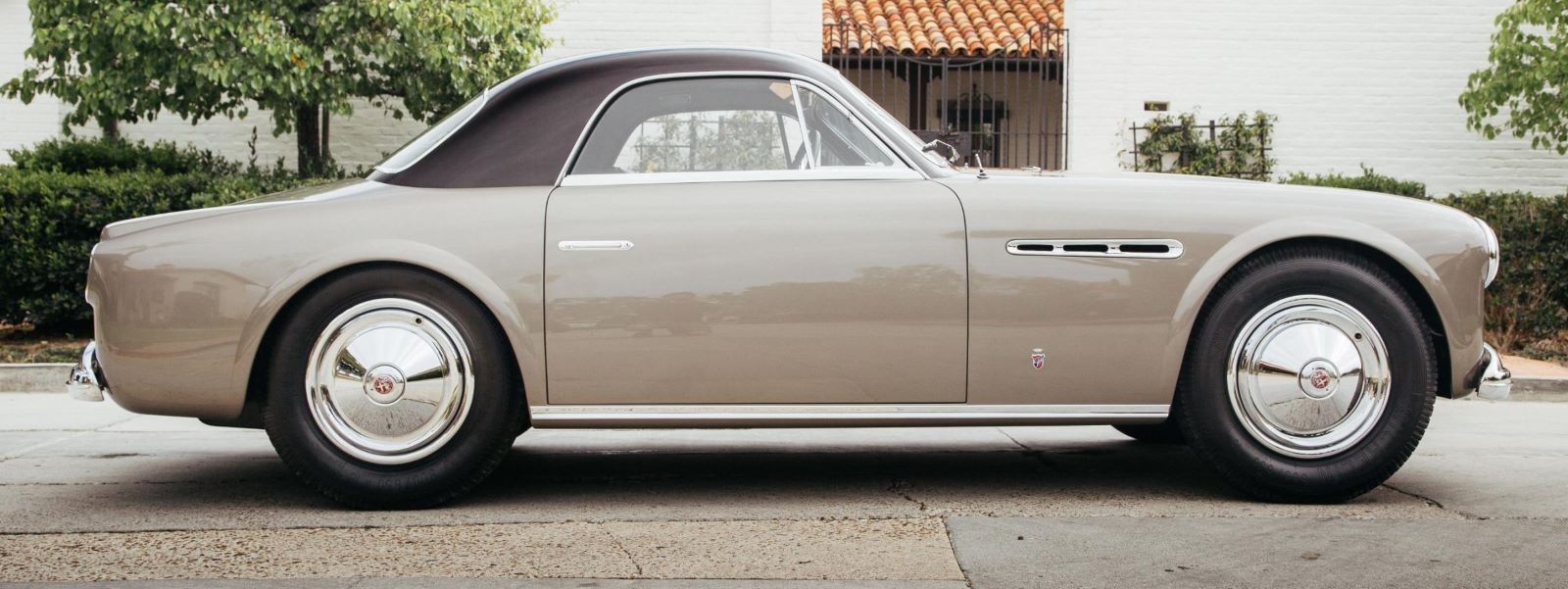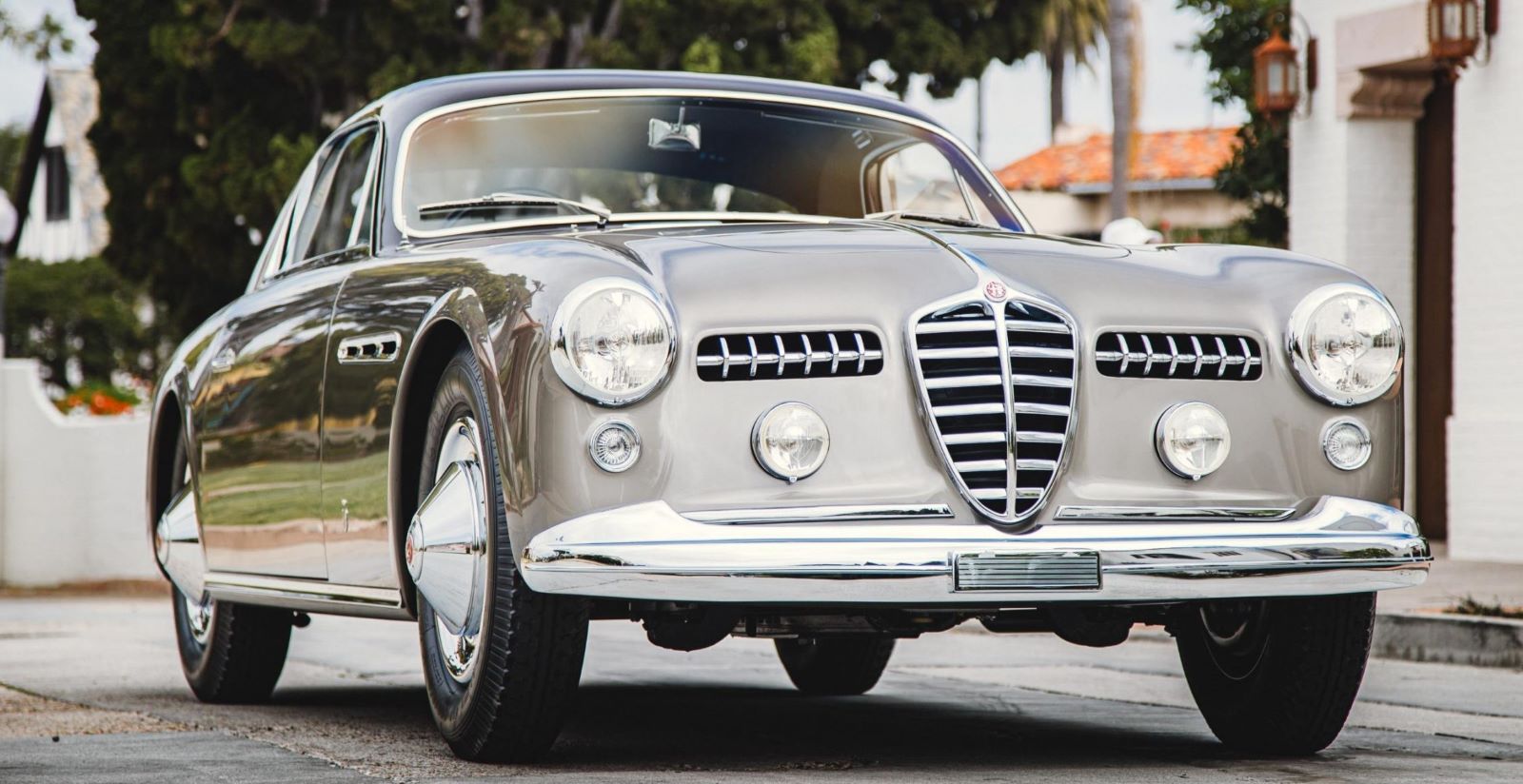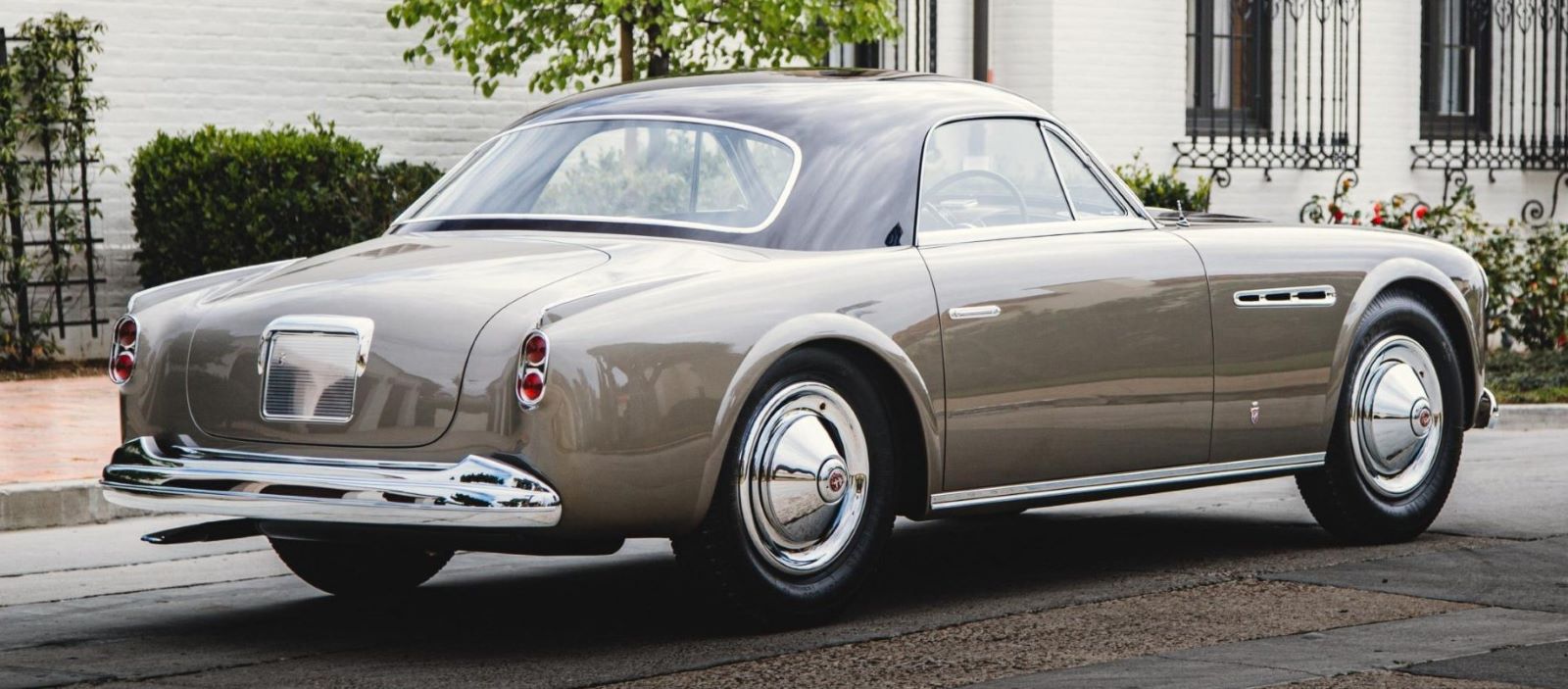
1951 Alfa Romeo 6C 2500 SS by Ghia is one of four ever built, and unique among the four in having a specially crafted tubular chassis manufactured by Gilco.
The 6C 2500 SS was the successor to the 2300, and Concours of Elegance will be hosting one of the most intriguing examples of this particular model. One of four bodied by Ghia with Supergioiello – or ‘Super Jewel’ – coachwork, it’s known that three of the cars were built on Alfa Romeo chassis, but this car was the only one built on an advanced tubular chassis produced by Gilco. Gilco is renowned as an innovative engineering firm responsible for building the chassis of the first ever Ferrari, the 125, as well as advanced projects for Maserati, Lancia and more.
The lightweight but sturdy tubular chassis, likely built in 1950, was a technological masterpiece compared with the steel ladderframe chassis that most 6C 2500s were equipped with. The running gear, suspension, and brakes are all period Alfa Romeo 6C components which appear to date primarily from 1948.
The 1951 Alfa Romeo 6C 2500 SS is a significant model in the history of Alfa Romeo, representing the last of the traditional 6C series before the company shifted to more modern designs. The “6C” designation stands for “6 Cylinders,” referring to the inline-six engine that powered the car. The “2500” indicates the engine’s displacement in cubic centimeters, and “SS” stands for “Super Sport,” signifying a higher-performance version.
The Alfa Romeo 6C 2500 SS was one of the most stylish and elegant cars of its time. It featured a curvaceous, aerodynamic body often crafted by renowned coachbuilders like Touring, Pinin Farina (now Pininfarina), and Carrozzeria Ghia. The design was characterized by a long hood, flowing fenders, and a streamlined profile, embodying the classic pre-war and early post-war Italian design language.
The 6C 2500 SS was equipped with a 2.5-liter inline-six engine, producing around 110 to 125 horsepower, depending on the specific configuration. This engine was advanced for its time, featuring dual overhead camshafts. The “Super Sport” version was more powerful and sportier compared to the standard 6C 2500 models, with a top speed of approximately 110 mph (177 km/h). The car was known for its smooth and refined performance, making it suitable for both spirited driving and comfortable touring.
The 6C 2500 SS featured a steel ladder-frame chassis with independent front suspension and a live rear axle with leaf springs. This setup provided a good balance between ride comfort and handling, making the car agile and responsive for its era.
The interior of the 6C 2500 SS was luxurious and meticulously crafted, featuring high-quality materials such as leather, wood, and chrome accents. The dashboard was elegant and functional, with clear instrumentation and controls. The cabin was designed to accommodate four passengers comfortably, making it a practical yet stylish grand tourer.


The Alfa Romeo 6C 2500 SS was produced in limited numbers, with only a few hundred units made between 1949 and 1952. This makes it a rare and highly collectible classic car today. Its combination of beautiful design, advanced engineering, and historical significance has made it a favorite among collectors and enthusiasts. The 6C 2500 SS represents the culmination of Alfa Romeo’s pre-war engineering expertise and design philosophy. It was the last model to bear the “6C” name, as Alfa Romeo shifted towards more modern designs and technologies in the 1950s. The 6C 2500 SS is often regarded as one of the most beautiful and desirable Alfa Romeos ever made, with its timeless design and exceptional performance continuing to be celebrated in the classic car world.
This model holds a special place in the history of Alfa Romeo, bridging the gap between the pre-war and post-war eras of automotive design and engineering. It remains a symbol of the brand’s dedication to combining performance with elegance.

You must be logged in to post a comment.